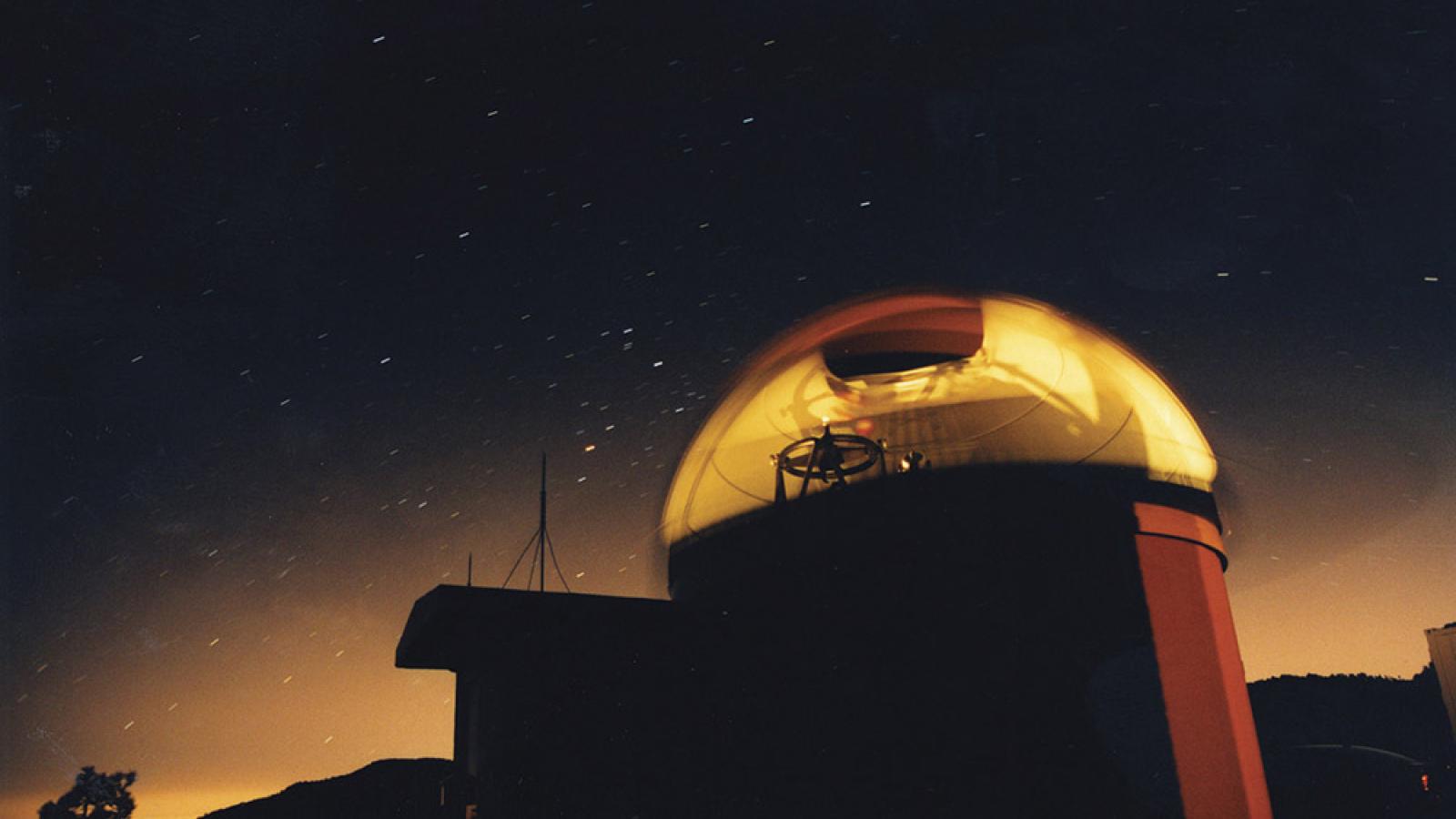From time to time, unsettling headlines appear in the news about massive asteroids passing close to Earth.
At Pomona College, student researchers have been working under the guidance of Associate Professor of Physics and Astronomy Philip Choi to track and collect data on potentially hazardous asteroids as part of a NASA-funded project with scientists at Caltech and the Jet Propulsion Laboratory.
The group’s latest NASA grant, a three-year $238,270 award, funds efforts to continue to find and track Near-Earth Objects (NEOs). The approach uses a novel technique called synthetic tracking to detect and determine the orbits of asteroids measuring less than 100 meters.
“They're relatively low mass compared to most cataloged asteroids, but their orbits take them very close to the Earth. If one of them would impact the Earth, it would have devastating effects,” Choi says.
“Astronomers typically utilize long-exposure images (minutes to hours long) to detect faint objects. Unfortunately, this approach breaks down for targets, like NEOs, that are both faint and fast-moving.
“By contrast, our technique combines thousands of short-exposure images with advanced computational tools to detect NEOs missed in classical surveys. An additional benefit of our approach is that it allows us to determine orbital trajectories about 10 times better than previous techniques so we can more efficiently and precisely predict when they will come back and where they will be when they do. That's a powerful capability that most other techniques don't allow.”
For the Pomona student researchers, the work begins after the sun goes down. In pre-pandemic times, that meant students filling nightly shifts that often lasted a few hours but sometimes stretched into the wee hours of the morning in the Remote Observing Room of the Estella Laboratory. There, researchers use computers to remotely control Pomona’s 1-meter telescope at Table Mountain Observatory, which is about 50 miles away and is one of the largest telescopes in the world dedicated to undergraduate research.
At the beginning of each night, even before opening the telescope dome, the researchers search multiple global monitoring resources that continuously report candidate Near-Earth Asteroids (NEAs) that need confirmation. Then they utilize a series of JPL tools to build an observing plan for the night around the most interesting of those targets. New alerts can come in at any time, so target assessment and observation planning are a continuous process throughout the night.
“If it's a particularly long night it might be sunset to sunrise,” says Nez Evans ’23, a physics major on the astronomy track who has been observing throughout the pandemic. “That is not usually something that we do, but it does happen occasionally if we have something specific that we're looking for. But most of the time it'll be maybe 6 p.m. to midnight or so.”
Choi credits Evans with sustaining the project during the pandemic after campus closed. Evans remained in Claremont and continued the solitary work even when he took a leave from his coursework. When campus buildings were closed and the Remote Observing Room was unavailable, to keep that data rolling in Evans remotely connected to half a dozen different computers at Pomona and JPL from his personal laptop.
Even more remarkable, Camille Molas ’21 was able to connect from abroad while spending part of the pandemic in Edinburgh, Scotland, as she worked on her astrophysics senior thesis, which sought to determine the rotations of certain asteroids.
The largest, kilometer-scale asteroids in our solar system have mostly been catalogued. But for objects the Pomona project is focused on, ranging from around 10 meters to 100 meters in size, there is an enormous amount of work to do. For instance, it is expected that researchers have cataloged only one in every 10,000 of the objects like the 20-meter asteroid that caused an unexpected explosion over Chelyabinsk, Russia, in 2013. The resulting blast injured more than 1,500 people and generated a shock wave that damaged some buildings and blew out windows hundreds of miles away.
“Thankfully, no one was fatally injured,” Molas says. “But that was kind of the awakening for all governments around the world to pay attention to these objects.”
Slightly larger asteroids like the one in the 1908 Tunguska event, which leveled an area of Siberian forest almost the size of Rhode Island, could obliterate a metropolitan area.
Predicting when asteroids could threaten Earth is only part of the challenge, however. Another is what could be done to prevent such a disaster.
“It is a work in progress,” Choi says. “Since the Chelyabinsk event, an international group has been meeting biannually at the Planetary Defense Conference to explore asteroid impact scenarios. The conference is effectively a fire drill in which a hypothetical impact scenario is presented on Day One, and over the course of the meeting groups work to assess the credibility and timescale of the threat. Though we currently have no way to deflect an incoming asteroid, predicting the impact location would allow for evacuation procedures to be implemented.”
The thought of such existential threats tends to diminish amid the everyday work, Evans says.
“I kind of have to remind myself of what I'm doing sometimes because when you're looking at the pictures, they're just pixels on a screen. If you look at them that way every day for hours on end, they kind of start to lose their meaning. You have to remind yourself that you're looking at a ball of gas millions of miles away or a giant rock flying through space at thousands of miles an hour.
“But once you do remind yourself, that does bring home that this is something that most people don't get to see very often. And it's funny because I always have family members ask me, ‘Do you have any big scary news about an asteroid that's going to hit?’ I'm like, ‘If there's any chance at all of anything like that happening, you guys will be the first to know.’ As of right now, we're completely safe.”
